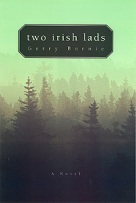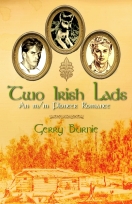The so-called “Hanging Judge”
[Actually, Begbie sentenced fewer persons to be hung than the average jurist of the day. Of the 52 murder cases he heard, only 27 of them resulted in a hanging sentence. Some historians believe the “Hanging Judge” epithet was a mis-reading of the Barkerville Gazette, that referred to him as the “haranguing judge” due to his scolding of accused and even juries he disagreed with.]
 Sir Matthew Baillie Begbie spent the first thirty-nine years of his life in Great Britain, far removed from the land he was to have such an influence on later in life. During these years Begbie’s life was filled with social and intellectual activities. He received his first degree from Cambridge University where he studied Math and the Classics. He was involved in a great number of extracurricular activities, devoting his free time to singing and acting in amateur productions, playing chess, rowing, and tennis. After Cambridge Begbie went on to study law. Some accounts claim he was a poor law student and barely managed to graduate. Despite this, he managed to establish a successful law practice in London before heading to British Columbia.
Sir Matthew Baillie Begbie spent the first thirty-nine years of his life in Great Britain, far removed from the land he was to have such an influence on later in life. During these years Begbie’s life was filled with social and intellectual activities. He received his first degree from Cambridge University where he studied Math and the Classics. He was involved in a great number of extracurricular activities, devoting his free time to singing and acting in amateur productions, playing chess, rowing, and tennis. After Cambridge Begbie went on to study law. Some accounts claim he was a poor law student and barely managed to graduate. Despite this, he managed to establish a successful law practice in London before heading to British Columbia.
It was not Begbie’s skill as a lawyer that won him the appointment of British Columbia’s first judge. The judge for this new colony had to be in excellent physical shape to thrive in the wilderness of British Columbia, a qualification Begbie met with his exceptional 6’5” height and athleticism. The position also called for someone with courage and enough integrity to resist bribes; all qualities of Begbie’s character.
The new colony was in desperate need of a magistrate to maintain law and order over the American mining population, so when Begbie finally arrived in Victoria on November 15th, 1858, he was greeted with great joy. He was immediately thrown into his duties when Ned McGowan’s War erupted six weeks after his arrival. This was to be the first of many events proving him to be levelheaded and fair in dispensing justice. He traveled all over British Columbia, on horseback and on foot, using his sleeping tent as his judicial chamber during the day. Despite his informal surroundings, Begbie always wore his robes and wig while holding court. During his travels Begbie also made note of the topography, weather, agricultural potential and possible road, town, and bridge sites in the areas he visited, providing valuable information to the colonial government
Contrary to his famous nickname “The Hanging Judge”, Begbie only imposed a few death sentences during his reign, yet he was not without fault in the courtroom and certainly had his detractors.
He did not particularly like or respect juries and their verdicts.
Also, he did not always strictly follow the law, but adapted it to suit his own beliefs and the land he was practicing in. Begbie was a snob when it came to other lawyers, distrusting any who were not trained within the British Empire. He even attempted to ban them from practicing in his court.
When Begbie was not traveling on his court circuit he lived in Victoria. He was an active participant in the community, becoming the first President of Victoria Philharmonic Society soon after his arrival. Throughout his lifetime he continued to provide impromptu solo singing performances to the society’s delight. For his outstanding service to the British Crown, Queen Victoria knighted him in 1875. Begbie spent his retirement in Victoria where he died in 1894.
Principal source: http://www.rocalink.com/wp-content/uploads/2012/10/ghosts-of-the-north-west-coast/bio.begbie.html.
♣♣♣
Looking for a good book to read? Then visit my other page: Gerry B’s Book Review. There are over 200 to choose from, and a new book is added every week. Thanks for dropping by.
Before you leave, why not consider following this page or leaving a comment?
















